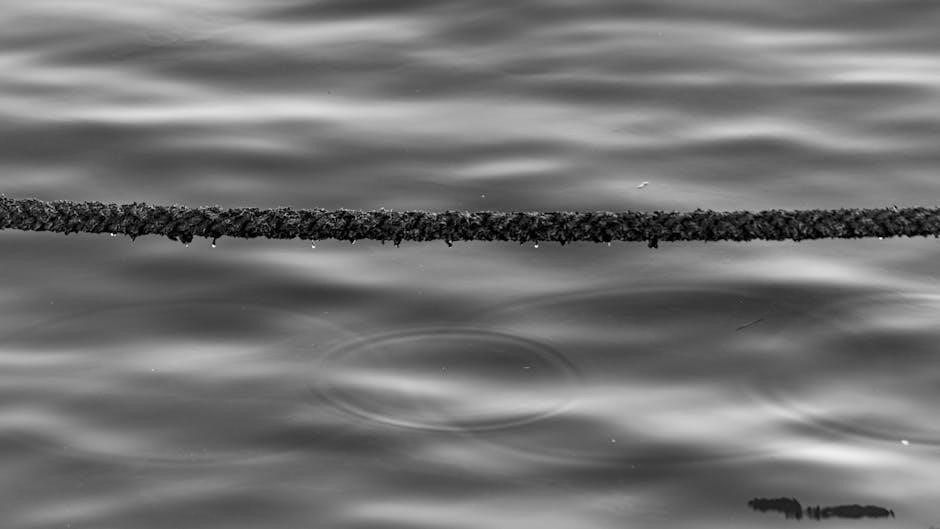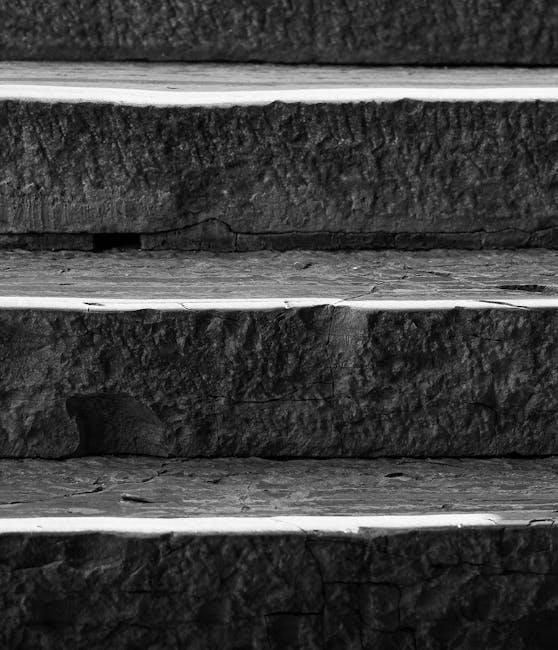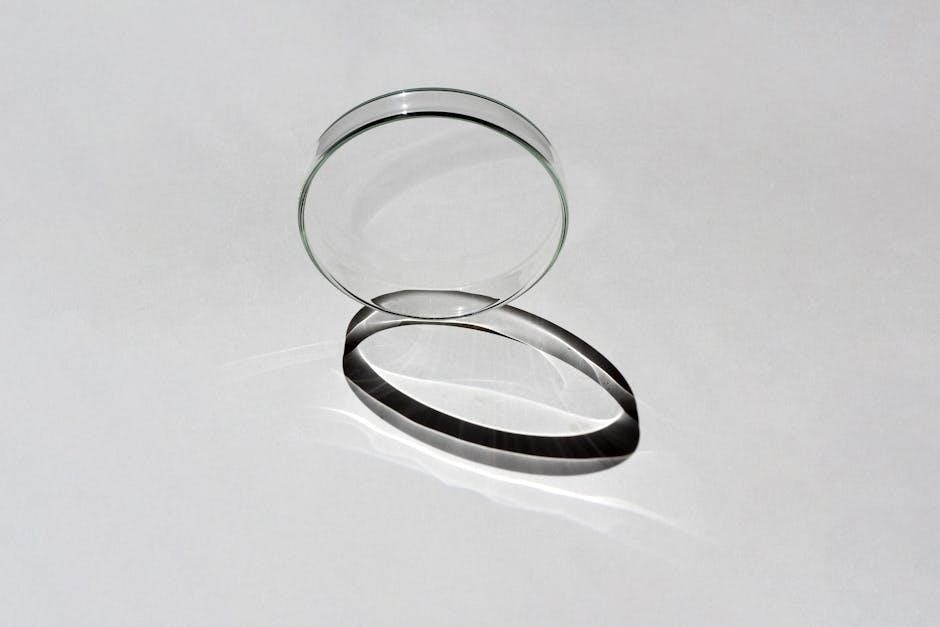The Line Bisection Test is a widely used clinical tool to assess unilateral spatial neglect (USN) or hemispatial neglect (HSN), often observed in stroke patients. It involves marking the center of a horizontal line, providing insight into spatial perception deficits. This simple, quick test is valuable in rehabilitation settings.

History of the Line Bisection Test
The Line Bisection Test (LBT) has its roots in the early 1970s, when researchers began exploring methods to assess spatial perception deficits in individuals with brain injuries. Initially introduced by Diller, Ben-Yishay, and Gerstman in 1974, the test was designed to evaluate spatial neglect, a condition where patients fail to perceive stimuli on one side of their body or environment.
The test gained popularity in the 1980s as a simple yet effective tool for clinicians to detect unilateral spatial neglect (USN), particularly in stroke patients. Its simplicity and non-invasive nature made it a preferred choice for bedside assessments. Over time, the LBT underwent modifications, with standardized versions being developed to improve reliability and consistency across clinical settings.
One notable advancement came in the 1990s, when studies demonstrated the test’s ability to quantify the severity of neglect, allowing for more precise monitoring of patient progress during rehabilitation. Today, the Line Bisection Test remains a cornerstone in neuropsychological assessments, widely used to diagnose and manage spatial neglect in stroke and traumatic brain injury patients. Its enduring relevance is a testament to its effectiveness in capturing the complex nuances of spatial perception deficits.

Procedure
The Line Bisection Test involves a horizontal line (typically 15 cm long) placed centrally in front of the patient. The individual is instructed to mark the midpoint of the line using a pen. This task assesses spatial perception and is often administered in clinical settings to evaluate unilateral spatial neglect;
3.1. Materials Needed
The Line Bisection Test requires minimal materials, making it accessible for both clinical and research settings. A standard test setup includes a horizontal line, typically 15 cm in length, printed or drawn on a sheet of paper. The line is centered on the page to ensure proper alignment. A pen or pencil is provided for the patient to mark the perceived midpoint. For consistency, the line is usually presented without additional markings or distractions. In some variations, multiple lines of varying lengths may be used to assess spatial perception more comprehensively. The test is designed to be straightforward, with no specialized equipment required, allowing for easy administration in bedside or outpatient settings. The simplicity of the materials ensures that the test remains cost-effective and widely applicable for assessing unilateral spatial neglect.
3.2. Step-by-Step Instructions
The administration of the Line Bisection Test is straightforward and can be completed in a few minutes. Begin by ensuring the patient is seated comfortably and positioned to view the test material without obstruction. Place the paper with the horizontal line (typically 15 cm in length) directly in front of the patient, centered on the page. Instruct the patient to mark the midpoint of the line using a pen or pencil. Emphasize that they should bisect the line as accurately as possible. If necessary, demonstrate the task on a separate example to ensure understanding.
Once the patient is ready, present the stimulus line and observe their marking. For individuals with severe neglect, additional lines of varying lengths may be used to assess spatial perception more comprehensively. After the patient has completed the task, record the location of their mark for later analysis. The test administrator should remain neutral and avoid providing feedback or cues during the process. This ensures the results reflect the patient’s true spatial awareness. The simplicity of the procedure makes it ideal for bedside or outpatient settings, allowing clinicians to quickly assess unilateral spatial neglect.
3.3. Administration in Clinical Settings
The Line Bisection Test is commonly administered in clinical settings, such as hospitals or rehabilitation centers, to assess patients with suspected unilateral spatial neglect (USN). The test is typically performed at the patient’s bedside or in an outpatient clinic. Clinicians ensure the patient is seated comfortably and positioned to view the stimulus material without obstruction. The test paper, containing a horizontal line, is placed directly in front of the patient, centered on the page. Patients are instructed to mark the midpoint of the line using a pen or pencil, with no additional tools or equipment required.

To ensure accuracy, the clinician should provide clear instructions and demonstrate the task if necessary. The test is usually administered under standard lighting conditions to avoid visual distortions. For patients with severe neglect, additional lines of varying lengths may be used to assess the extent of their spatial perception deficits. The test’s brevity and simplicity make it ideal for integration into routine neurological or rehabilitation assessments. Clinicians often use the results to inform treatment plans, particularly in stroke rehabilitation, where spatial neglect is a common complication; The non-invasive nature of the test ensures patient comfort and cooperation, making it a practical tool in clinical practice.
3.4. Scoring the Test
Scoring the Line Bisection Test involves measuring the patient’s mark relative to the true midpoint of the line. The test paper is typically designed with a horizontal line, and the patient’s mark is assessed for accuracy. The deviation from the midpoint is recorded, often in millimeters or centimeters, to quantify the degree of spatial neglect.
In clinical settings, the score is calculated by comparing the patient’s mark to the actual center of the line. A deviation greater than 10% from the midpoint is often considered indicative of unilateral spatial neglect (USN). For example, if the line is 15 cm long, a mark placed more than 1.5 cm away from the center may suggest neglect.
The results are categorized as normal or abnormal based on predefined criteria. Normal responses typically show minimal deviation, while abnormal responses indicate significant spatial perception deficits. In some cases, multiple lines of varying lengths are used to assess consistency in the patient’s performance.

The scoring process is straightforward and does not require specialized software, making it practical for clinical use. The results are often interpreted in conjunction with other assessments to confirm the presence and severity of neglect. This quantifiable approach ensures reliable and consistent evaluation of spatial perception deficits, particularly in stroke patients.

Interpretation of Results
The Line Bisection Test results are interpreted by analyzing the patient’s ability to accurately mark the midpoint of the line. Significant deviations indicate unilateral spatial neglect (USN) or hemispatial neglect (HSN). The degree of deviation correlates with the severity of neglect, helping diagnose and guide rehabilitation strategies.
4.1. Analyzing the Patient’s Mark
Analyzing the patient’s mark in the Line Bisection Test involves determining how accurately they identify the midpoint of the line. Patients with unilateral spatial neglect (USN) typically mark the line off-center, often toward the unaffected side. The degree of deviation from the true midpoint is measured to assess the severity of neglect. For example, a mark significantly shifted to the right may indicate left-sided neglect, and vice versa. The test administrator records the distance from the patient’s mark to the actual midpoint, providing a quantifiable measure of spatial perception deficits. This analysis is crucial for diagnosing the presence and extent of neglect, which guides rehabilitation strategies; Consistent results across multiple trials enhance the reliability of the assessment. The simplicity of this method makes it a valuable tool in clinical settings for monitoring patient progress during recovery.
4.2. Examples of Normal and Abnormal Responses
In the Line Bisection Test, normal responses typically involve patients marking the midpoint of the line with high accuracy. This indicates intact spatial awareness and the absence of unilateral spatial neglect (USN). For instance, a mark placed very close to the center of a 15 cm line is considered within the normal range.
Abnormal responses, however, are characterized by significant deviations from the true midpoint. Patients with USN often mark the line off-center, usually toward the unaffected side of their body. For example, a patient with left-sided neglect may place their mark far to the right, while a patient with right-sided neglect may mark the line to the left. The degree of deviation correlates with the severity of neglect, with larger deviations indicating more pronounced spatial deficits.
In clinical settings, examples of abnormal responses are often quantified to assess the extent of neglect. For instance, a mark placed 3 cm to the right of the midpoint on a 15 cm line may indicate mild neglect, while a mark placed 7 cm to the right suggests a more severe condition. These responses are critical for diagnosing spatial perception deficits and guiding rehabilitation strategies.
4.3. Reliability and Validity of the Test
The Line Bisection Test (LBT) has demonstrated strong reliability and validity as a clinical tool for assessing unilateral spatial neglect (USN). Studies have consistently shown that the test yields consistent results across multiple administrations, indicating high test-retest reliability. For example, research involving stroke patients has found that the test reliably measures spatial neglect over time, with minimal variability in results when administered by different examiners.
In terms of validity, the LBT effectively measures the presence and severity of USN, making it a valuable tool for diagnosing spatial perception deficits. The test’s simplicity and clarity ensure that it accurately reflects the patient’s ability to perceive and bisect lines, with deviations from the midpoint strongly correlating with neglect severity.
Clinical studies, such as those conducted by Fujii et al. (1991), have validated the test’s ability to detect spatial neglect in stroke patients. Additionally, the LBT has been compared to other neglect assessments, such as the Behavioural Inattention Test (BIT), and has shown comparable sensitivity in identifying spatial deficits.
While the test is highly reliable and valid, its results should be interpreted in the context of the patient’s overall clinical presentation. Factors such as cognitive impairments or visual field deficits may influence performance, requiring careful consideration during interpretation. Nonetheless, the LBT remains a robust and widely accepted method for evaluating spatial neglect in both clinical and research settings.
4.4. Common Errors in Interpretation
When interpreting the results of the Line Bisection Test (LBT), several common errors can arise, potentially leading to misleading conclusions. One frequent mistake is misattributing deviations in line bisection to unilateral spatial neglect (USN) without considering other factors, such as visual field deficits or cognitive impairments. For instance, patients with hemianopia may exhibit similar deviations but for reasons unrelated to neglect.
Another error is failing to account for the patient’s marking technique. Some individuals may intentionally or unintentionally make multiple marks, which can complicate scoring and interpretation. Additionally, administrators may incorrectly assume that all deviations from the midpoint indicate neglect, without considering the normal range of variability or the influence of fatigue or attention deficits.
Administrators must also avoid bias in scoring. For example, preconceptions about the patient’s condition may influence how deviations are interpreted. Furthermore, neglecting to standardize test conditions, such as ensuring proper lighting or patient positioning, can introduce variability and lead to inaccurate results.
To minimize errors, it is crucial to follow standardized administration and scoring procedures, consider the patient’s overall clinical presentation, and avoid overinterpreting minor deviations. Proper training and awareness of these potential pitfalls are essential for accurate and reliable test interpretation.

Clinical Applications
The Line Bisection Test is primarily used in stroke rehabilitation and traumatic brain injury to assess unilateral spatial neglect (USN). It aids in diagnosing spatial perception deficits and guides therapeutic interventions. Its simplicity makes it a valuable tool in clinical and bedside examinations for various neurological conditions.
5.1. Use in Stroke Rehabilitation
The Line Bisection Test is extensively utilized in stroke rehabilitation to detect and manage unilateral spatial neglect (USN), a common post-stroke condition. This test helps clinicians identify patients with spatial perception deficits, enabling early intervention. By marking the center of a line, patients demonstrate their ability to perceive space accurately. Studies show that performance on this test within 14 days of a non-lacunar stroke correlates with rehabilitation outcomes. It is particularly effective in monitoring progress during recovery, as improvements in bisection accuracy often reflect reduced neglect symptoms. The test’s simplicity allows for repeated administration, making it a valuable tool for tracking patient progress over time. Furthermore, the results inform tailored rehabilitation strategies, such as visual-spatial training, to address specific deficits. The Line Bisection Test is not only diagnostic but also prognostic, as longer performance times are associated with poorer prognoses for hemispatial neglect. This makes it an indispensable tool in stroke rehabilitation, aiding in both assessment and the planning of targeted therapies. Its widespread use underscores its importance in improving functional outcomes for stroke survivors.
5.2. Application in Traumatic Brain Injury
The Line Bisection Test is also applied in the assessment and rehabilitation of individuals with traumatic brain injury (TBI). Spatial neglect, a common sequela of TBI, can significantly impact daily functioning and recovery. The test helps clinicians identify patients with visual-spatial deficits by asking them to mark the midpoint of a horizontal line. Deviations from the true center indicate neglect or impaired spatial perception. This tool is particularly useful in TBI cases where cognitive and perceptual deficits may be subtle but impactful.
Research demonstrates that the Line Bisection Test is effective in monitoring recovery trajectories in TBI patients. Improvements in bisection accuracy over time often correlate with reduced neglect symptoms and better functional outcomes. The test’s simplicity makes it suitable for repeated administration, allowing clinicians to track progress and adjust rehabilitation strategies accordingly.
In TBI rehabilitation, the test informs targeted interventions, such as visual-spatial training and compensatory techniques, to address neglect and improve quality of life. Its non-invasive nature and ease of use make it a valuable asset in both acute and long-term care settings. By providing insights into spatial perception, the Line Bisection Test plays a critical role in optimizing rehabilitation plans for TBI patients.
5.3. Use in Other Conditions
The Line Bisection Test is not limited to stroke or traumatic brain injury (TBI); it is also utilized in diagnosing and managing other conditions that affect spatial perception and cognitive function. For instance, it is applied in assessing patients with Alzheimer’s disease, where spatial disorientation and neglect-like symptoms may emerge. The test helps differentiate between cognitive decline and specific perceptual deficits, aiding in early diagnosis and tailored interventions.
Additionally, the test is used in evaluating individuals with Parkinson’s disease, particularly those experiencing visual-spatial impairments or hemispatial neglect as part of Parkinson’s disease dementia. It provides insights into the progression of spatial cognitive symptoms and guides rehabilitation strategies.
The Line Bisection Test is also employed in cases of multiple sclerosis (MS), where lesions in the brain can lead to spatial neglect or visual field deficits. By identifying these issues, clinicians can develop targeted therapies to improve patients’ functional abilities and quality of life.
Furthermore, the test is applied in assessing patients with brain tumors or other space-occupying lesions, where spatial neglect may arise due to localized brain damage. Its simplicity and sensitivity make it a valuable tool for monitoring changes in spatial perception during treatment or recovery.

Performance Time and Prognosis
The Line Bisection Test not only identifies spatial neglect but also provides valuable prognostic information through performance time analysis. Studies have shown that patients with longer completion times are more likely to have severe unilateral spatial neglect (USN), which correlates with poorer functional outcomes.
Research indicates that performance time is a critical factor in predicting recovery trajectories. Patients who complete the test quickly and accurately tend to have better prognoses, as their spatial awareness and cognitive function are less impaired. Conversely, those with prolonged performance times often require more intensive rehabilitation and may experience slower recovery.
The test’s simplicity allows for repeated administration, enabling clinicians to monitor progress over time. Improvements in performance time and accuracy are strong indicators of recovery and rehabilitation efficacy. Additionally, the Line Bisection Test helps identify patients at risk of persistent neglect, enabling early intervention and personalized treatment plans.

Comparisons with Other Neglect Tests
The Line Bisection Test is often compared with other assessments for unilateral spatial neglect (USN), each offering unique advantages. One common comparison is with the Behavioural Inattention Test (BIT), which evaluates neglect through a variety of tasks. While the BIT provides a comprehensive assessment, the Line Bisection Test is more concise and quicker to administer, making it ideal for bedside evaluations.
Another frequently used test is the Albert’s Test, which involves canceling lines on a page. This test is more complex, requiring both visual scanning and motor responses, whereas the Line Bisection Test focuses solely on spatial perception. Studies suggest that while both tests are effective, the Line Bisection Test is better at detecting subtle neglect symptoms due to its simplicity and direct measurement of midline accuracy.
The Star Cancellation Test is another tool used to assess neglect, incorporating both visual and cognitive demands. However, it may be less sensitive to mild neglect compared to the Line Bisection Test. Overall, the Line Bisection Test stands out for its ease of use, reliability, and ability to detect a wide range of spatial neglect severity. This makes it a preferred choice in clinical settings for initial assessments and monitoring progress.

Neuroscience Behind the Test
The Line Bisection Test is rooted in the neuroscience of spatial perception and attention. It assesses unilateral spatial neglect (USN), a condition often caused by damage to the parietal lobe, particularly the right hemisphere. This brain region is critical for integrating sensory information and maintaining spatial awareness.
When the parietal lobe is damaged, such as in stroke patients, individuals may exhibit neglect of one side of their body or environment. The Line Bisection Test reveals this by asking patients to mark the midpoint of a line. Those with neglect typically place their mark toward the unaffected side, demonstrating an impaired mental representation of space.
The test also taps into the brain’s attentional systems. The posterior parietal cortex plays a key role in directing attention to specific locations, and damage here disrupts this ability. Additionally, the frontal lobe, which manages motor planning and decision-making, contributes to the test’s outcomes, as patients must plan and execute their mark accurately.
Understanding the neural basis of the Line Bisection Test helps clinicians pinpoint the underlying causes of spatial neglect and tailor rehabilitation strategies. This test provides a window into how the brain constructs and perceives spatial relationships, making it a valuable tool in both research and clinical practice.
